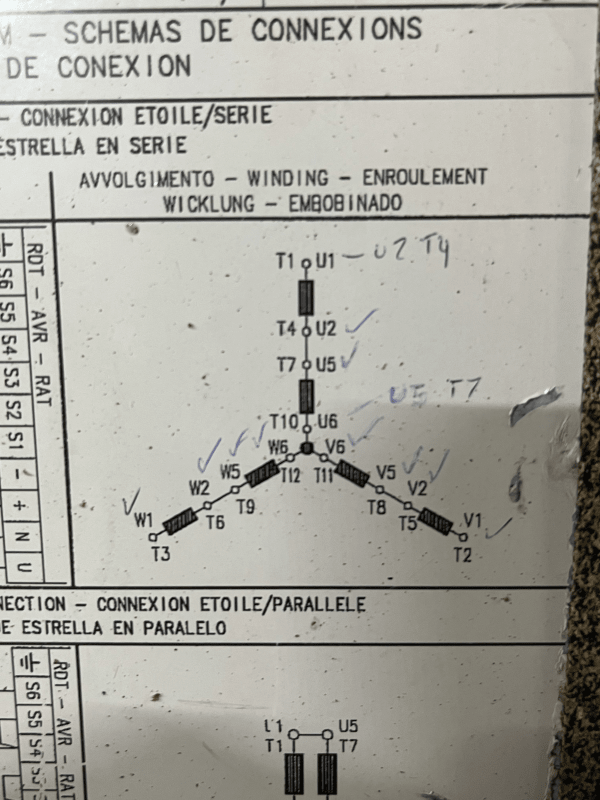Duckman25
Electrical
- Oct 28, 2023
- 5
We have a 3 phase 480 v 60 kW generator that parallels the electric utility at 60 hz. The purpose of the generator is to generate electricity instead of buying it from the utility. When the paralleling switch closes, we see the the amperage on each leg climb quickly (up to 200 amps prior to us giving the shut down command) but the kW stays at less than 10 kW. We have confirmed that the amperage observed is correct (using an amp clamp). We have also found that the ground has about 70 amps during that time. at 200 amps on each leg, we would expect much more power (kW) would be greater. Trying to figure out what is causing this condition.

